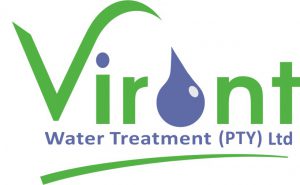Water Softening
If water for domestic consumption tests at over 18 dGH it should be mechanically softened as the expense of purchasing and maintaining a water softening conditioner can be justified by the saving in maintenance of heating equipment such as geysers, apart from the extra benefits of more comfortable bathing, washing and shaving.
The most economical way to soften household water is with an ion exchange water softener. This unit uses sodium chloride (salt) to recharge man-made resinous beads that exchange hardness minerals for the sodium. As the hard water passes through and around the beads, the hardness minerals (ions) attach themselves to the bead, dislodging the sodium ions. This process is called “ion exchange”. When the beads have no sodium ions left, they are exhausted, and can no longer soften any more water until they are recharged by flushing with salt water. The sodium ions in the salt force the hardness ions off the resin beads and the excess sodium is then rinsed away and the resin is ready to start the process all over again. This cycle can be repeated many times before the resin loses its ability to react to exchange ions in this manner.
The average water usage per day for a typical suburban household is approximately 200 litres per person (including children) and therefore the conditioner needs to be sized to be able to accommodate this throughput. The recharging of the resin is relatively straight forward and can be achieved in one of several ways. The oldest way is by a timer in that the water usage is calculated and the frequency of recharging programmed into the clock on the timer. Then, on the appointed day, at the appointed hour, the unit recharges. The disadvantage of this method is that the water will be conditioned whether you use it or not and salt will be flushed away automatically which would be a waste. Also, you may run out of softened water if one day you use an excessive amount of water, such as if you have guests staying. Typically though, you should choose a unit that will treat one day’s supply of water and still have about 40% of the resin beads in the recharged state. This will provide the most efficiency for the salt and the regeneration water.
A second way to initiate recharge is by electronic sensing in that the resin beads are electronically checked to determine when they need to be recharged. This method solves the problem of needing extra water from time to time and not wasting salt and water during flushing when there is no water usage. Typically the sensor units can save up to 42% of the salt and recharge water. A third way to initiate recharge is by using a water meter that is installed in the water line to simply measure how many litres of water were actually used. The unit is then set according to the water hardness so that it will recharge when the set volume of water that exhausts the exchange ability of the resin beads is about to be reached. Although this method also saves a high percentage of recharge salt and water, it can become inaccurate over a period of time if the water hardness varies.
Many variations of these methods are on the market. Some use computers to calculate in advance when to recharge the unit whereas some others have two resin beds (tanks) that they switch back and forth between, keeping soft water supplied all the time at the highest efficiency. These systems are typically most effective in high hardness waters, i.e., over 20 dGH and with more than 4 people in the family. Low hardness water and smaller families typically do not require the extra expense of these options.
